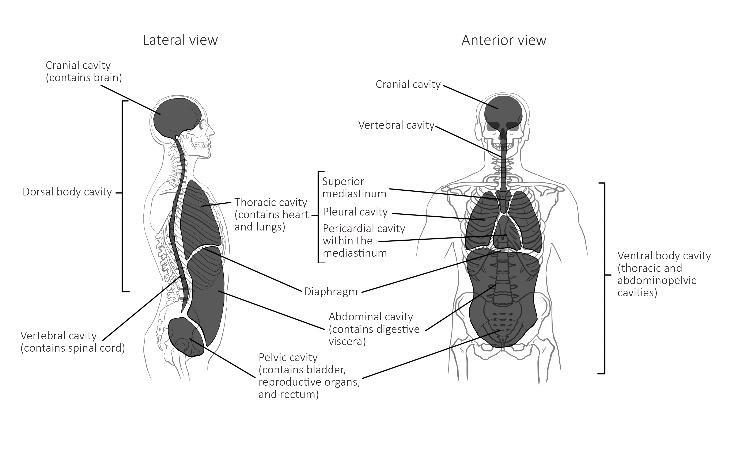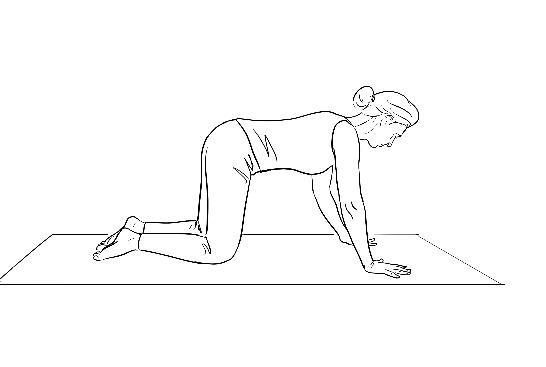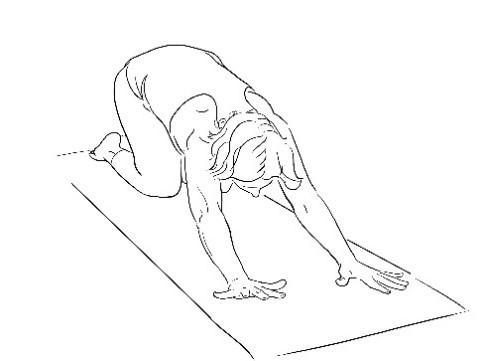Have you ever thought about the connection between digestion and movement? Digestive Health expert Charlotte Watts explains how the health of your gut affects the way you move.
Moving from Centre
We know that how we move isn’t simply relegated to joints and muscles. Movement reaches out from the fascia that wraps around organs, particularly our digestive organs at our belly centre. Movement is defined to a large degree, by how fluid or sticky the tissues between organs might be.
The digestive and pelvic organs underneath the diaphragm need ‘slide-and-glide’ to move, expand and shift. This helps avoid adhesions to other organs and tendons. When fluidity is inhibited, there is a suppression of our ability to move in a sensuous way. We can feel ‘stuck at’ the core. When we move more fascially, from fully hydrated organs, muscles don’t tire or get sore; they have efficiency of energy usage and enough fluid delivery to take away waste metabolites.
Bags within Bags
Every organ in the body is encased in its own fascial sac within the abdominal cavity. The sac that then holds all of the digestive organs is called the mesentery (see diagram). We also have such containing membranes in the pelvis, chest and brain, spinal cord and nerves for the various organs and nerve bundles there.
There is continuum between all these ‘bags’, with all activity. This includes communication between nervous, immune and endocrine systems creating rhythms and harmonic or dissonant responses. When stress tightens tissues, what was once was a smooth, free-flowing, protective layer around an organ or muscle can become a tight sack that strangles movement and causes pain.

Image taken from Yoga Therapy for Digestive Health, by Charlotte Watts
Our being is a series of ‘bags within bags’ – we can access those deep inside through the outer bag of the skin. Any kind communication in one area can ripple through to another. Free-flowing movement and simple pulsing, rocking, twisting, compressing and releasing motions all help to free what may have been tangled and tight. Placing hands and self-massage at the belly help register very real and palpable care deep into organs and fascia.

Facial Distortions, Lesions and Adhesions
Digestive issues, such as IBS or inflammatory conditions (IBD) can both create and be affected by changing qualities of visceral fascia. They can both lead to and in turn, be worsened by sticking or tension in and around organs.
Physical trauma and scar tissue – as well as lack of mobility from stress and trauma – can create fascial distortions, where tissues become seized and even unresponsive. In the digestive tract, these adhesions can affect the way we move, as well as contribute to digestive dysfunction. Fascia showing trauma can become less organised and elastic, and scar tissue can also transmit pain more acutely; making us tense in protection further.
Tightness in one area of the body ripples out into others and the site of pain very often transferred from its point of origin; a lesion in the digestive organs can transmit to the hip, sacroiliac joint, or further. Living in protective mode long-term also creates patterns of holding and seizure that ripple out into physical symptoms and limitations.
Expressions of our Internal World
In the referred pain diagram below, you will see how sensation from an organ is often relayed through fascia to another place. This is not a ‘paint-by-numbers’ exercise; the position, depth and severity of the feeling (and condition) is individual and may change greatly, person-to-person.

Image taken from Yoga Therapy for Digestive Health, by Charlotte Watts
This also highlights the asymmetrical arrangement of our organs. This can result in different expressions on each side of the body eg restrictions felt in lymphatic flow into armpits and groin and structural extensions into shoulder blades, shoulders and hips. Those with digestive disorders can feel sensitive around the gut. They also feel restrictions and aversions into connecting muscles such as the psoas and diaphragm, with possible differences right and left.
This is not isolated to the gut but can also feed in dysfunction from other organs such as the liver, heart and brain. This can create changes in the nervous system and circulation. Muscles are similarly affected, which can alter postural holding of the digestive organs, lymphatic flow, oxygen delivery and pressure distribution.
Difficulties and uncomfortable feelings we may attribute to muscular difference left-to-right may actually be feeling something happening into organs and fascia, transmitted out from the centre. Digestive pain can be explained by inflammation and fascial restriction but these may be the effects of trauma and chronic stress held deep in our core– a place to hold our psychic pain in a well-sealed box.
Movements for fascial slide-and-glide
A sensitive movement practice helps us to listen in and respond to the changing tides, textures and tones within the belly. Breath awareness allows the breath to drop into the belly and diaphragm. This is a basic need for both optimal digestive function and movement. Moving from the centre in different ways helps create pliability, hydration and responsiveness into the fascia around and between organs. This frees space, glide, fluidity, mobility and tone into all of the physiology in the abdominal cavity.
All fours enquiry into the belly

- Start on all fours feeling the natural movement of your spine as lungs empty and fill. Explore your body and the space around it, feeling roots through hands and lower legs. Rest in child pose or onto elbows whenever needed.

- Coming back to neutral, limiting shoulder motion, rotate the tailbone to create a circling effect deep into the pelvis and viscera; this is a key movement for slide-and-glide and loosens lower back tissues in preparation for downwards-facing dog. When these tissues feel loose, you can allow the movement to snake up into the spine and involve the shoulders, neck and head; letting your whole being fluidly express what it needs, without agenda or interpretation.
- Repeat on the other side. You might note that as the one not picked first, it may feel like ‘going against the grain’. You might meet the interesting stuff of resistance. It may also be going against the tide of movement in the colon, so create resistance there that supports its muscular function; a softer alternative to the abdominal stomach-churning kriya, nauli.
Further exploration
- From neutral, on an out-breath, take your hips to one side and down bottom-to-heels. Inhale up the other side back up to all-fours, creating full pelvic circles.
- As you inhale, lift-up from the belly with straight arms so that it is a lift back to the start, rather than a drop-down into bent arms, with little weight on the hands until back up. In this way, the we feel postural lift from the belly, to inform for when we stand up. Change the circling to the other side.
Interested in learning more? Join our FREE taster session: Friday 29th July!

Yin Yoga Teacher Training: Minds, Meridians, Moments (In Person)
5th October 2026 • West London Buddhist Centre • Face to face • Norman Blair
- Details and booking

Meditation Teacher Training
14th January 2026 • Online Live • Graham Burns Isabell Britsch
- Details and booking
Join Charlotte Watts for a FREE taster session where you can ask questions and get a taste of our Teaching Yoga for Digestive Health Training. The taster session is absolutely free and will offer you an overview of the course content, opportunity to ask questions and also offer you a glimpse of what could await you on your journey to becoming a fully qualified Digestive Health teacher with Yogacampus. The session will run 19:00 to 20:00 UK time. Register your free spot via the link above.
Meet the Teacher
Charlotte Watts is a Senior Yoga Teacher with a love of explorative, compassionate and somatic yoga practices, with influences of Qi Gong and Feldenkrais.
Charlotte teaches classes in Brighton and London, workshops, UK yoga weekends and retreats abroad. She also runs courses for yoga teachers to attend to their own self-care. She teaches modules for Teaching Yoga for Stress and Burnout, for CFS/ME and for Digestive Health for Yogacampus. Charlotte also teaches on the Yoga Therapy course for The Minded Institute.
Charlotte is an author with many published books. These include: Yoga Therapy for Digestive Health (Singing Dragon 2018); Good Mood Food (Nourish 2018) and The De-Stress Effect (2015).


